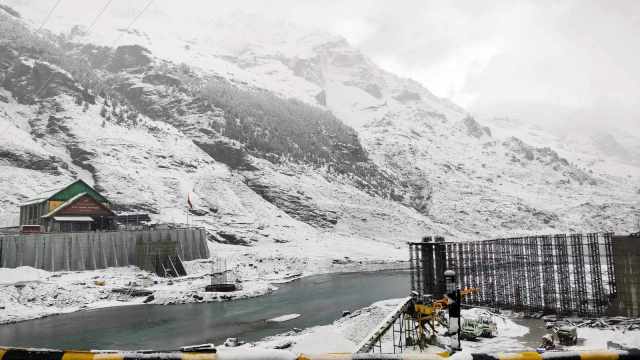Despite customary bursting of firecrackers, Himachal Pradesh recorded largely “satisfactory” to “moderate” air quality this Diwali. Although a visible spike in Air Quality Index (AQI) at all 12 towns/locations was observed on the Diwali day (October 20) compared to the penultimate day before the festival, the overall air quality remained better than the 2024 Diwali, according to the Himachal Pradesh State Pollution Control Board (HPSPCB).
Noise pollution levels, however, rose sharply in several towns. The permissible noise limits are 50 decibels (dB) for silence zones, 55 dB for residential areas, 65 dB for commercial zones and 75 dB for industrial areas. In towns such as Chamba, Una, Baddi, Rampur Bushahr, and Kullu, the noise level exceeded the permissible limits on Diwali night, indicating an auditory impact even as air quality indices improved.

According to HPSPCB data released on Wednesday, Shimla recorded the minimum AQI of 57 (satisfactory) in the state and Baddi the maximum of 167 (moderate), with most towns falling into either the “satisfactory” or “moderate” categories on this Diwali. Last Diwali, the state capital had recorded an AQI of 66 and its industrial hub of Baddi 392 (very poor), indicating a significant improvement.
Story continues below this ad
An AQI between zero and 50 is considered “good”, 51 and 100 “satisfactory”, 101 and 200 “moderate”, 201 and 300 “poor”, 301 and 400 “very poor”, 401 and 450 “severe” and above 450 “severe plus”.
According to the HPSPCB data, while most towns showed improvement over last year, Dharamshala and Una recorded higher pollution levels. Dharamshala showed a slight deterioration, with AQI rising from 109 in 2024 to 120 this Diwali. Similarly, Una witnessed an increase from 122 to 140.
Parwanoo, Damtal, Sundernagar, Paonta Sahib, Kala Amb, Baddi, Barotiwala, Manali and Nalagarh recorded significant improvement in air quality compared to Diwali 2024.
However, Manali and Sundernagar had the cleanest air on Diwali, with AQI levels of 62 and 68, respectively. Both fall under the “satisfactory” range.
Story continues below this ad
Environment experts attribute the improvement to “lower industrial emissions” and “better public awareness”.
“Many industrial units in Baddi remained closed around Diwali, and public compliance with green firecrackers helped reduce pollution,” an HPSPCB official said.
“Himachal Pradesh has only one Continuous Ambient Air Quality Monitoring Station (CAAQMS) installed in Baddi. AQI reading at all other locations/towns is observed by old equipment approved by the Central Pollution Control Board (CPCB), but it delivers results after 24 hours,” the official added.
Meanwhile, the ambient air quality monitoring conducted across 12 towns between October 13 and 20 (pre-Diwali period) showed none of the monitored locations fell into either the “poor” or “severe” categories.
Story continues below this ad
The air quality across Himachal remained from ‘good’ to ‘moderate’ during the pre-Diwali period.
The monitoring exercise covered Shimla, Parwanoo, Dharamshala, Damtal (Jassur), Sundernagar, Paonta Sahib, Kala Amb, Una, Baddi, Barotiwala, Nalagarh, and Manali.
The study measured Respirable Particulate Matter (PM10 and PM2.5), Sulphur Dioxide (SO2), and Oxides of Nitrogen (NOx) over 24-hour periods.
HPSPCB Member Secretary Dr Pravin Chander Gupta said, “The overall air quality this Diwali was significantly better than previous years. None of the monitored stations in Himachal recorded air quality in the poor or severe category. This reflects greater awareness and responsible celebration practices by citizens.”
Story continues below this ad
Graphic: AQI Comparison – Diwali 2024 vs. Diwali 2025 (Average Values) (Source* Himachal Pradesh State Pollution Control Board)
Location AQI (Pre-Diwali 2024) AQI (Diwali 2024) AQI (Pre-Diwali 2025) AQI (Diwali 2025)









